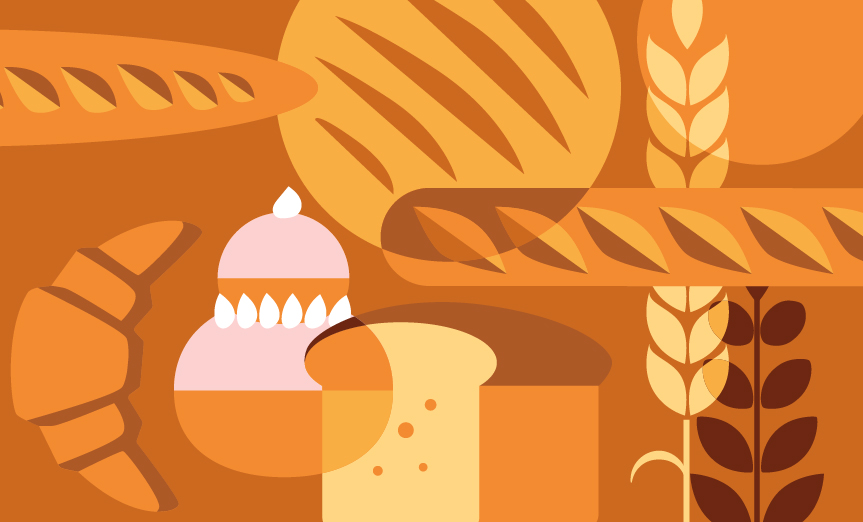48 hours at the Gros Caillou
Paris - Île-de-France/2024

© François Roux
With its embassies and consulates, this district of the 7th arrondissement has a somewhat stuffy air. Yet the velvet salons of the bourgeoisie rub shoulders with the gouaille of some Parigots. How could it be otherwise? The Eiffel Tower, symbol of Paris, dominates the Gros Caillou.
From the top of its 330 meters, the iron lady looks out over the Gros Caillou, the 138-hectare district stretching out at its feet between the Seine, Champ-de-Mars, Avenue de la Motte-Piquet and Les Invalides. The Eiffel Tower would gladly take a stroll here. Having seen the world go by since the 1889 Universal Exhibition, the Tower has developed a strong wanderlust. Its neighbors have much to offer. Starting with the Musée du Quai Branly, designed by Jean-Michel Wilmotte. It opens up horizons to the Americas, Africa, Asia and Oceania, and even beyond the boundaries of reality in shamanism and other beliefs. Visitors come away rich in knowledge, but also a little disoriented. Does the vast world and its cultures make your head spin? Some slump into the deckchairs in the garden, designed by Gilles Clément, while others seek a seat in the glass-and-steel Café Jacques.
Still others take three steps to Aux Deux Abeilles. Since 1985, this bohemian tearoom, run by the same family, has seen local children grow up and become parents. Remaining faithful to their sweet memories, they are joined by tourists on the go and, occasionally, by popes from the Russian Orthodox Church of the Holy Trinity Cathedral. The Russian "spiritual and cultural center", opened in 2016, is just around the corner. Jean-Michel Wilmotte (him again!) designed the five-bulb-topped complex. Made of fiberglass and composite materials (a world first at the time), they were covered with 90,000 sheets of 24-carat gold. This, we like to say, is eternal Russia, far from the noise of boots in the Ukraine. You don't need to wave a white handkerchief to visit the church, which is well worth a visit. Some of the icons date back to the 17th century and stand out against the immaculate white of the walls. There is already talk of transforming the iconostasis (interior wall lined with icons).
Another unusual journey takes us into the bowels of the capital. The Musée des égouts de Paris shows the city as we've never seen it - or wanted to see it - in smells we usually shun. The depths of the earth reveal seemingly endless galleries. Paris suddenly appears like a Swiss cheese. We learn that over 300 million cubic meters of wastewater and rainwater are transported by a 2,442-kilometer sewer network. "A Parisian consumes an average of 120 liters of water a day, of which almost 60% is used for hygiene and sanitary purposes, and only 1% for drinking", says a sign. Let's go and find that 1% in the fresh air, on a café terrace. Along the way, with our noses in the air, curiosities of the 7th district pop up here and there: the Art Nouveau exuberance of the building designed by Jules Lavirotte (1864-1929) at 29 avenue Rapp; the quiet passages, including that of Jean Nicot (1530-1604), the diplomat who introduced tobacco to France (hence the name "nicotine"); the neo-Gothic Protestant church of Saint-Jean, set back in a garden at 147 rue de Grenelle; or the Cotinat herbalist pharmacy at 151 rue de Grenelle, with its recently restored, listed walnut decor.
Then, of course, there's rue Saint-Dominique, rue de Grenelle and, finally, rue Cler, the heart of the district. Food shops and many others line up happily. The Floralies florist started out there forty years ago, when he was 20. He's done every baptism and funeral in the neighborhood. Inevitably, the neighborhood has changed. Many point to the decline in tourist numbers, a phenomenon that predates Covid. Yet foreigners have been known to flock to the Rue Cler side of Paris. In their eyes, the up-and-down moods of the cafés and brasseries reinforce the picturesque aspect of the capital, worthy of the Emily in Paris series. In terms of postcard image, the old Café Brasserie Aux P.T.T. has recently been restored to its original 1930s style. It has also changed its name to Aux Téléphones. "What do you know, nobody knows what P.T.T. stands for anymore!" says one of the partners, who has installed old telephones on the walls. Her father used to work in the P.T.T. department in the big building next door. Today, Mariage Frères occupies part of it. On Saturdays, the famous tea counter offers a tasting workshop - the only address in the company to do so to date. Another journey then begins, through the flavors of white tea and rose petals, fragrant red rooibos from South Africa or Cocada, a fragrant black tea from Colombia... The Eiffel Tower could do with a cup of tea. Maybe it will calm her cravings for something else.

Open

Open

Open


Open
Food products, kitchen equipment, tableware, service solutions...
See the full list of partners who place their trust in Gault&Millau
All our partners
Become
a Partner
LEARN MORE

















































